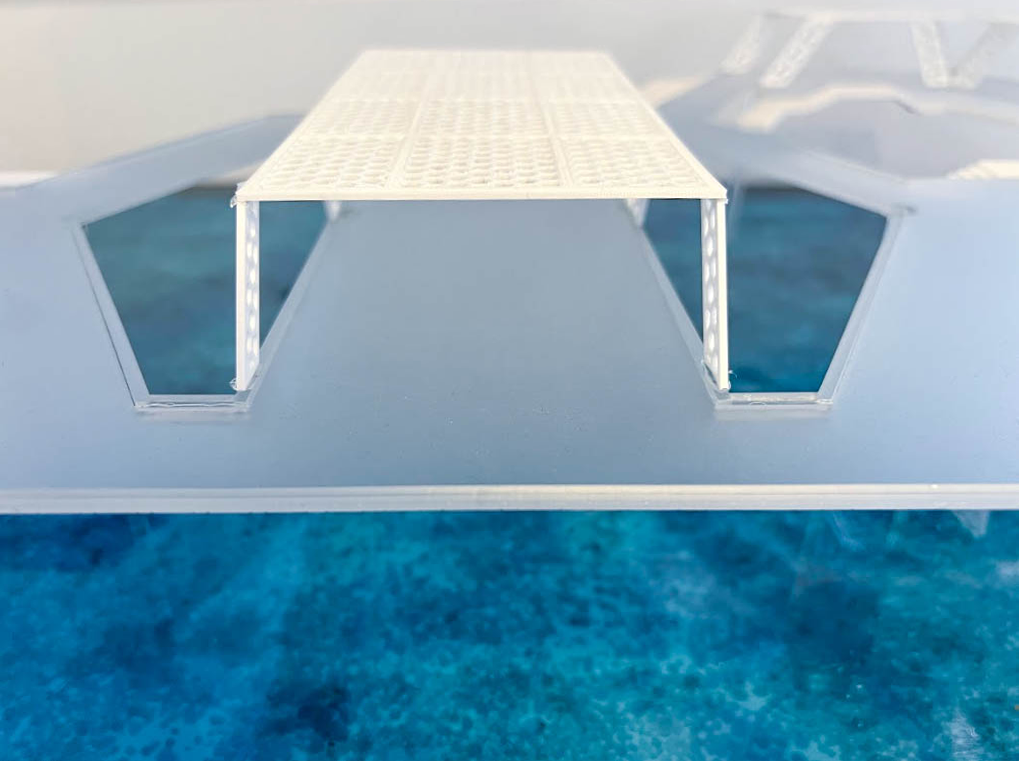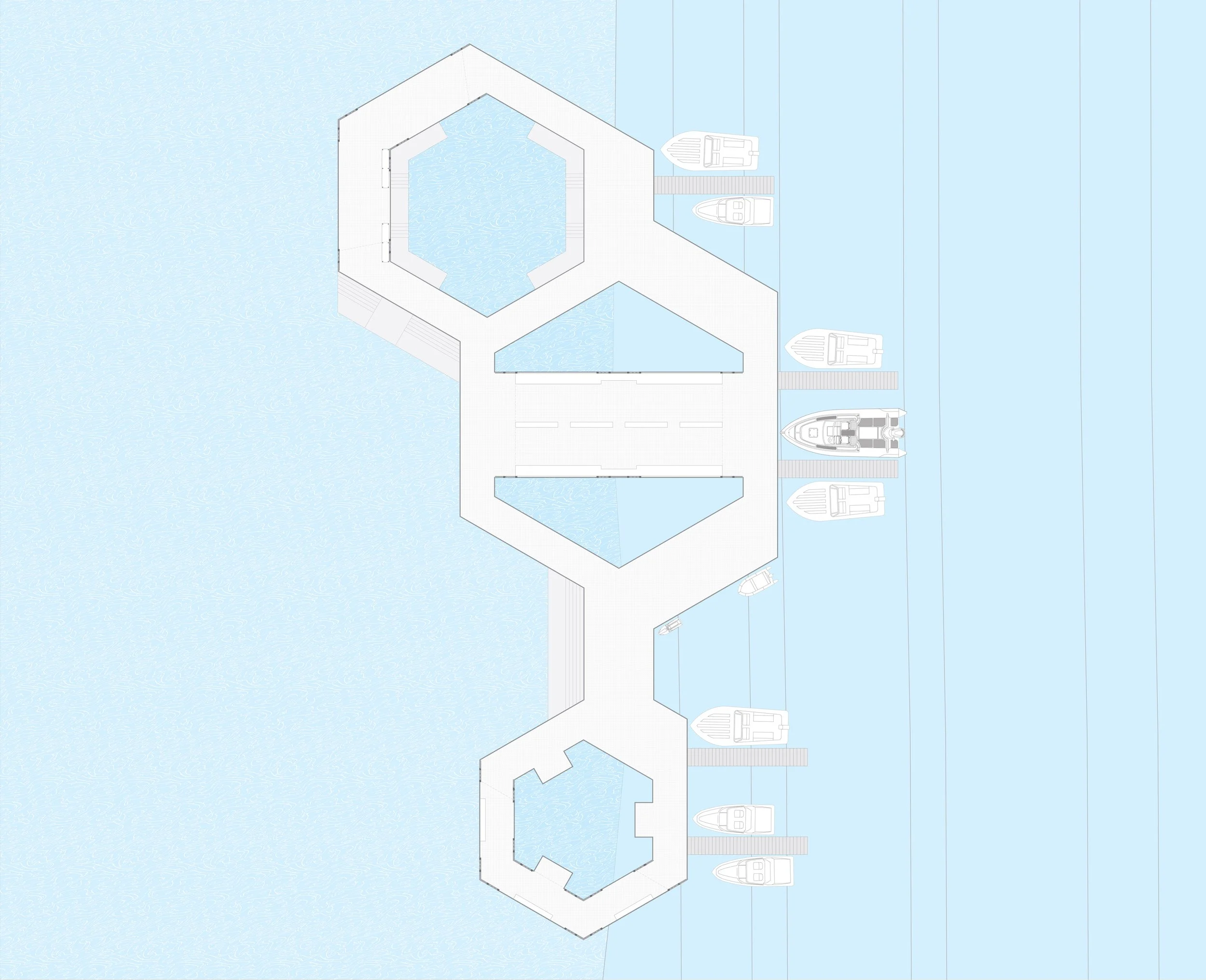Underwater Forest
INSTRUCTOR: ANTHONY FONTENOT | SPRING 2022 | DEGREE PROJECT
Seaforestation, the focus of my thesis, consists of educating the public on restoring, planting, managing and caring for underwater kelp forests. Kelp forests that provide rich habitats for marine life have been severely affected by climate change and the resulting changes in sea levels. Intentional focus to rebuild the kelp forests that we lost can lead to a pivotal change in improving the current prognosis.
I am exploring points of action that will help create a post carbon world while also focusing on educating the public on seaforestation and rebuilding the kelp forests along the California coast line. It would be beneficial to create a center that focuses on our kelp forests because stalks of kelp can absorb carbon at a much greater rate than the forests on land.
This project has two points of focus; the land structures and the ocean platform.
The land structures will be the first areas that everyone will come in contact with. It will hold offices, tanks, living spaces for park rangers, and public gathering spaces. The ocean platform will be built on the border of the kelp forest to allow people to monitor its growth and help revitalize it while also providing a space for exploration and research. This will be conservationists with their work while also allowing tourists and visitors to explore the ocean and its kelp forests while learning about the benefits of the kelp.
LOCATION :
In these maps you can see the path that the kelp forest once covered years ago. The kelp forest is represented by the blue line in the ocean. The original path of the kelp forest used to reach Alaska and would come as far south as the lower tip of California. It now breaks into smaller patches of forests that no longer connect down the coast. The site being utilized is in the northern tip on Malibu, California. The kelp forest in the area took a major hit and this project will help regrow what we have lost.
This project was divided into three different zones.
The sea platforms meant for research, the docks, and the visitor’s area on land.
The first zone is on land. Visitors will first come into the parking lot (8) aquept with a large parking lane for community busses, numerous electric vehicle charging stations, and plenty of bike racks. From the parking lot they will be lead down a walking path past the solar panels (9) and to the various visitors areas.
The land zones are:
7) the Picnic Tables / Visitor’s Center
6) the Research Laboratories
5) Urchin Touch Pools
4) Oceanarium
3) the Ranger’s Living / Work Space
(7) The picnic area has over 20 tables and benches for visitors to take a break or have lunch. The benches are surrounded by planters that are filled with plants native to the California coast. This is also where all the public water stations are located.
(6) The research laboratories are designated for the scientists and conservationists that visit the site. Here they can take samples from the ocean platforms and test them to make sure that the forest is healthy and thriving. This gives them a working area on site.
(3) There will be park rangers designated to protect the land and the area around each station, the docks, and the ocean platform. These living spaces will give them a place to work and rest while they are not patrolling or on break.
(5) To understand what went wrong with the kelp forests, you also have to look into otters and sea urchins. These touch pools will give guests an opportunity to learn about them in a hands on environment.
(4) The oceanariums will allow guests to be submerged in the world of the kelp forest without ever leaving land. It is the perfect space for visitors to learn about the fish that live amongst the kelp and be able to see what the growing kelp looks like.
the Rangers Living Quarters
the Touch Pools
the Touch Pools
the Picnic Tables / Visitor’s Center
After visiting the different stations on land, guests can visit the walking path down to the beach where they can either enjoy the sandy retreat or walk along the dock. This dock is where all the electrics boats that will be shuttling guests will be parked when they are not at the ocean platform.
In the spirit of saving our oceans and cutting down on carbon emissions, all the modes of transportation that will be parking on this dock will be electric.
There are docks on the eastern side of the platform facing the beach for easy access for the boats bringing in the researchers and other guests. Once the boats are docked, people can either follow the right or left paths down to the various view points or the can follow the center path shown in the section on the left. This center are has benches, lockers, and air tanks for anyone who is diving off the platforms and into the kelp forest.





















